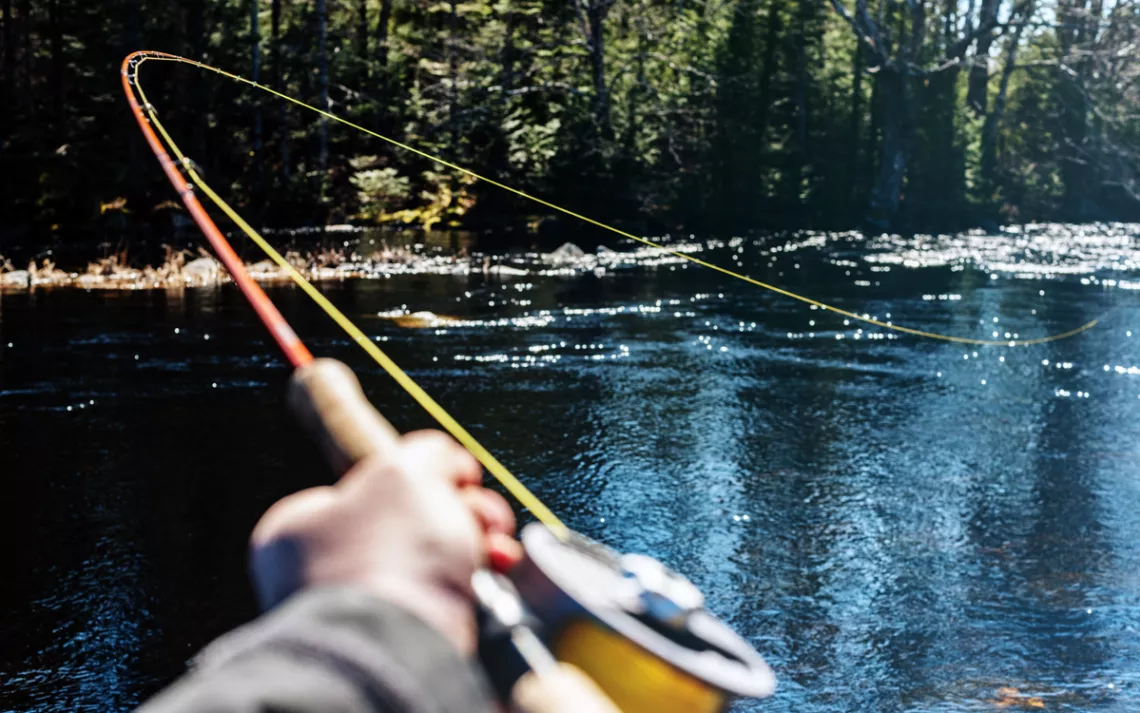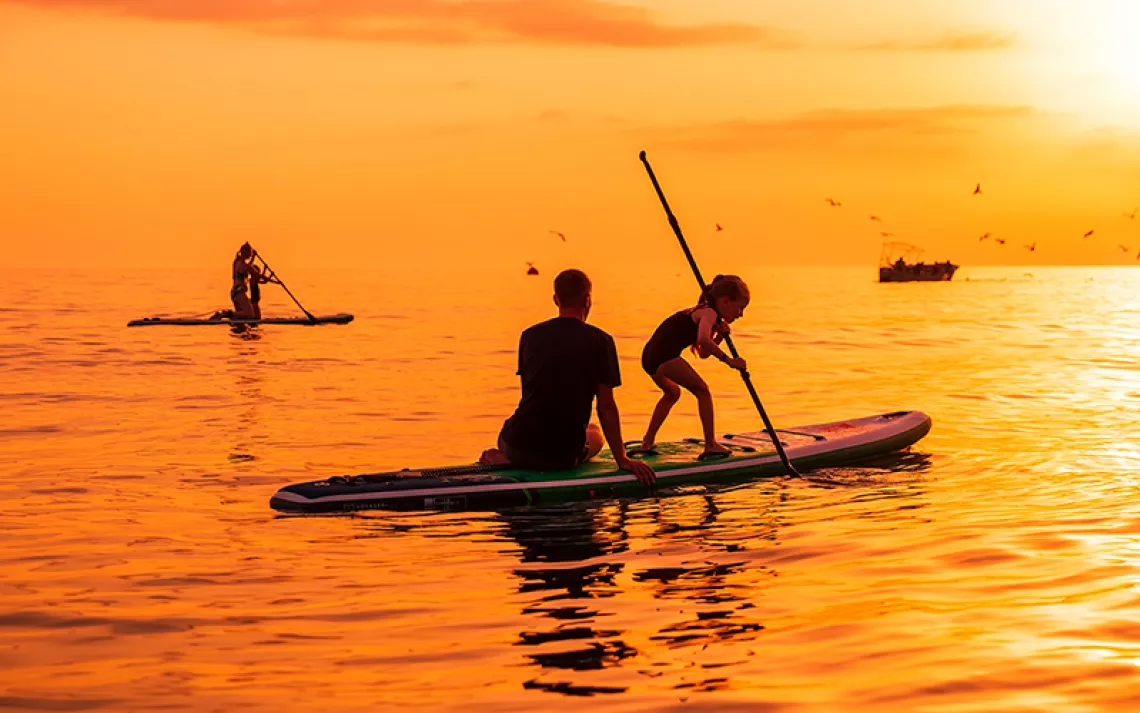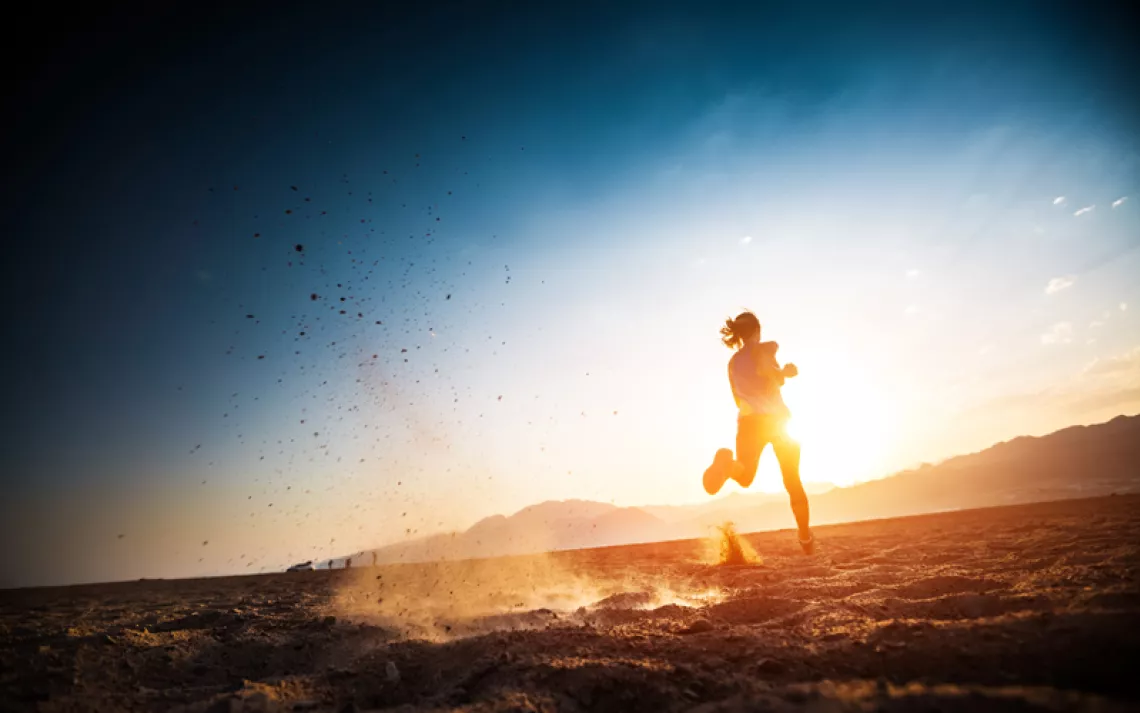How to Get Started With Fly-Fishing
Tips for beginners, why to take it up, and the best gear to start

Credit: iStock/shaunl
Click here for a slideshow featuring the art of tying fly-fishing flies.
Fly-fishing is, first and foremost, the art of mimicry. Standing in the North Platte River outside Casper, Wyoming, this spring, I cast a tiny midge fly onto the surface of the water in hopes of giving it the appearance of a passing insect. I was trying to trick a hungry trout into thinking my fly was the tastiest option available on a gorgeous, late-May morning.
In hopes of catching a rainbow trout, I’d traveled more than 1,000 miles to Wyoming and Montana, two places that are among the world’s best for trout fishing. But fly-fishing doesn’t require long journeys to faraway locations. While many aficionados seek out trout-filled rivers and streams, you can learn the basics by exploring your nearest body of water. The first fish I caught while fly-fishing was a tiny bluegill, in a pond just a few miles from my Indianapolis home.
Why try it out? Fly-fishing invites participants to closely observe the world from the unaccustomed perspective of a fish. Pursuing a perfect cast feels almost Zen-like, and many tout the activity’s meditative quality. The sport can be relatively low-impact too: Most anglers practice catch-and-release and prefer wading into rivers over trips in gas-guzzling power boats. And while fly-fishing remains relatively niche in the United States—with the fewest participants of any fishing category—it’s also the fastest-growing kind of fishing, according to the 2021 Outdoor Foundation Special Report on Fishing.
That’s despite the fact that, especially for novices, fly-fishing can be a remarkably challenging way to actually catch a fish. “Fishing tries you,” said my friend Cari Ray, the folk singer turned fishing guide behind the fly-fishing website and podcast Fisher of Zen. “It’s really easy to get impatient or angry when things don’t go your way.” A relative newcomer to the sport myself, I spent that May morning in Wyoming getting outsmarted by the fish.
It's all part of the draw. Fly-fishing can be hard, but catching a fish isn’t my only reason to get in the water. And, it made the satisfaction that much sweeter when, the next day, I returned to the North Platte River and reeled in my very first rainbow, glistening in a dozen silvery colors. Ready to get started? Here’s what you need to know.
Get the gear
A fly rod and reel are the most important pieces of equipment when-fly fishing, with options ranging from $50 starter kits to high-end gear costing hundreds of dollars (or more). For most beginners, a middle-of-the-road setup is the right place to start. The Orvis Encounter Fly Rod Outfit and Redington Crosswater are two great, entry-level graphite rod kits that retail for around $200, coming with plastic reels and a protective case.
But before you start shopping, learn the nomenclature. Rods are categorized by length (in feet), and “weight,” which refers to the rod’s overall strength and size. Anglers in small creeks generally choose an 8–9' rod, while longer rods are ideal for large bodies of water. The appropriate weight varies with your prey: A 4- or 5-weight rod is great for trout or smallmouth bass, while a beefier 10- or 12-weight rod is suited to big salmon and tarpon. Many reels come prespooled with fly line and backing (which secures the fly line to the reel). You’ll still need leaders and tippet, two kinds of filament that attach your heavier fly line to your fly.
Flies, of course, are the stars of the show. Flies are small hooks layered with string, feathers, or other material to imitate the appearance of an insect or other favored fish food. While commercial versions are plentiful, tying them by hand is a revered art among anglers—as this slideshow reveals, the flies themselves can be exquisite.
Basic types include the “dry fly,” which floats on top of the water to simulate a bug landing on the surface; a “nymph fly” that floats underneath the surface, mimicking a larva; and a “streamer fly” that gives the illusion of a smaller fish or other prey. To find the best options for your region, ask at a local fly shop, where staff stay up-to-date on which flies are proving effective in nearby rivers and ponds. Since many flies cost between $1 and $3, you can get an assortment.
Most fly anglers wade into the water, using waders and wading boots to stay warm and dry. Both pieces of gear are a significant investment, however, so you might choose to fish on the riverbank at first. And if the water is warm enough, all you need to wade is a pair of shorts and water shoes with good traction.
Where to go
Nearly any body of water is a possible fly-fishing spot—if there are fish, you can try your luck with a fly rod. When seeking a great place to fish, though, visit the local fly shop to find out where the fish are biting, when they’re most active, and what they’re currently feeding on. (And consider buying a handful of flies as a thank-you.)
Or, hire a guide. Even expert anglers hire local guides when traveling to new areas, as it’s a great way to learn the region’s most active spots. Guides are also good sources when learning local laws. In some states, for example, anglers have the right to wade in rivers and creeks that flow through private property. In others, only continuously floating on a boat is allowed. In most states, fishing licenses are available online, over the phone, or at local shops.
Basic techniques
Fly-fishing starts with what anglers call the “basic cast.” Starting with the rod held low, the angler snaps the rod backward, drawing the fly line behind in a sinuous arc. After pausing for a beat, they flick the rod and line forward once again. Done correctly, the basic cast results in a line that loops tightly in the air, then lays perfectly straight on the water. (To see this in action, check out an Orvis instructional video in the company’s helpful YouTube series.)
You can practice this cast in your yard or a nearby park—sans hook—but some prefer to practice on the water. Who knows what you might catch while practicing? And if you’re just starting out, lessons are a great way to establish the basics. Ask local shops, or consider visiting bigger retailers such as Orvis and Bass Pro, which sometimes offer free introductory classes. Online databases are another worthwhile resource, and some, such as United Women on the Fly and Orvis’s 50/50 on the Water, cater to women and BIPOC individuals who have historically been underrepresented in fly-fishing.
Leave no trace
While fly-fishing can be a relatively low-impact sport, reducing environmental harm is key to keeping it sustainable. It’s easy to shed small pieces of plastic when trimming lines, so carry a small, resealable bag for bits of monofilament and trash that might otherwise fall in the water.
And when practicing catch and release, follow “keep fish wet” principles. That means keeping the fish’s mouth and gills in the water as much as possible to minimize its exposure to air. And, only handle the fish with a rubber net or wet hands, then release it as quickly as you can. Time out of water stresses fish, which can lead to premature death. (Use a pair of fish-specific pliers to help quickly and efficiently remove hooks.)
Stay safe
Take a look at water levels before you float or wade, and, if you’re unfamiliar with local conditions, ask at the local fly shop first. Felt-soled boots will help with traction on mossy or slick rocks, but you can also bring a collapsible hiking pole for extra stability.
 The Magazine of The Sierra Club
The Magazine of The Sierra Club



